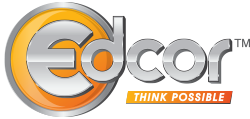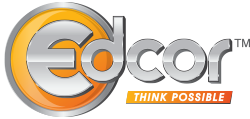Amid the uncertainty of the times we live in, one thing is for sure that we are not the same people who went home from our offices in March of 2020. The past two years have upended the way we work, the way we perceive work, and the way we hope our work would be designed in the future. While Hybrid work locations have become a reality in the evolving landscape of the present workforce; fully remote and full-time in-person work are slowly becoming a thing of the past. Nonetheless, some organizations are functioning at their best with either one or a combination thereof depending on what suits their culture and growth the best. Yet again, proving that there’s no one-size fits all solution for managing the current workforce.
The past 9 months, since my last post on Successful Management of a Hybrid Work Culture, have unraveled the same fact over and over again: that managing the current workforce – Hybrid or not – is a fluid strategy with moving goal posts and shifting short- and long-term priorities. There are multiple novel factors that HR is up against as we continue to forge ahead including the Covid-19 variants, the Great Resignation also being called the Great Reshuffle, evolved expectations of the workforce called the Great Expectations, ever-rising fuel costs, and 40-year high inflation. Never before in the history of work have so many forces come into play at the same time. Unsurprisingly, these challenges affect each industry differently. What works for an organization may backfire for another. Consequently, we cannot have cookie-cutter solutions that work for everyone or the majority even. The HR community has a lot to learn from the trends and each other’s experiences but ultimately must devise their roadmap considering the unique needs of their company and workforce.
According to the Work Trend Report 2022 from Microsoft, the present workforce is in transition:
- 57% of the remote workers are considering a shift to Hybrid work
- 51% of Hybrid workers are considering a shift to remote
- 50% of leaders plan to require full-time in-person work in the coming year
- 54% of managers feel wedged between leadership and employees
The biggest reason stated against in-person work is the commute, whereas the biggest reason stated for in-person work is team collaboration. Both are important factors. Moreover, with the volume of confidential information being shared these days, for some functions fully remote is not a long-term viable solution.
Some more facts from the Work Trend Index 2022 indicate that 52% of Gen Z and Millennials are considering changing employers this year. Moreover, a total of 70% of Gen Z and 67% of Millennials are looking for side-hustles to generate additional income. This only means one thing; organizations need to have a retention and engagement strategy anchored in the well-being and professional growth of employees like Education benefits. Education benefits have historically been used to recruit, engage, and retain employees with a high ROI of 129% considering the prevalent dearth of talent, and high recruitment and training costs.
As employees and leaders battle contradictory facets of remote and in-person work – like employee isolation vs lack of work-life balance , flexibility to work at any time vs ensuring availability when required, and inclusivity vs preferred behaviors – the key takeaway here is collaboration. Companies will need to get creative and build the workplace of the future with adaptive and connected solutions. Leaders will need to design work that’s more flexible and yet doesn’t deter the productivity and growth of the company. Managers will need to effectively monitor productivity and inclusivity for the hybrid or remote workers without micromanagement. Employees will need to keep up outputs to ensure that productivity is not deterred.
To conclude, my recommendations really are not meant to be tone-deaf to the prevalent local and industry trends, and yet do what suits the culture and growth of your organization the best.

Edcor is a woman-owned business and is the benchmark in education benefits administration. For 40 years, our customized service and solutions have allowed Fortune 1000 Clients to use education benefits programs for employee recruiting, retention, and development. Please feel free to reach out to us!
Sara VanWagoner, VP Corporate Growth, Edcor



